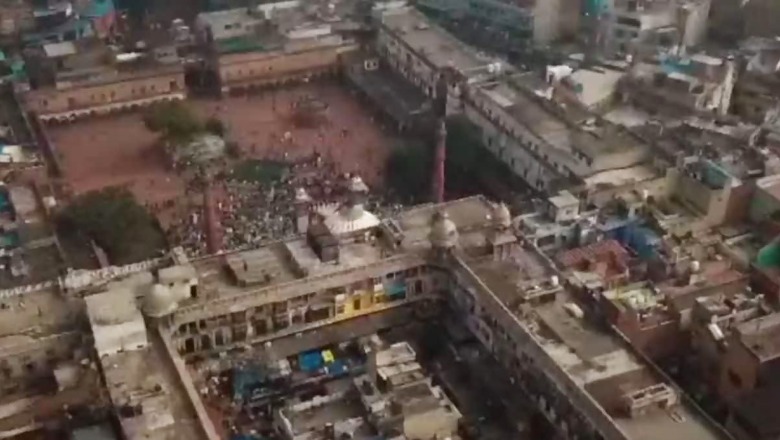
views
When people arrive in Delhi by flight, they often catch a glimpse of the city from the air a few minutes before landing. However, not everyone has the opportunity to travel by air. For those looking to experience Delhi from an aerial perspective without breaking the bank, there’s an affordable option available.
For just Rs 70, visitors can enjoy a complete aerial view of Old Delhi by visiting the historic Jama Masjid. By climbing one of the towers of Jama Masjid, one can witness the entire expanse of Old Delhi spread out below. This unique opportunity is exclusive to Jama Masjid, and visitors can purchase a ticket for Rs 70 from the ticket counter to access the tower.
Upon obtaining the ticket, visitors can ascend the tower by climbing approximately 150 to 200 steps, reaching the pinnacle where the panoramic view of Old Delhi awaits. This experience is available seven days a week from 10 AM to 6 PM, allowing visitors to choose a convenient time for their visit.
One of the remarkable aspects of this experience is its popularity among both domestic and international tourists. The tower at Jama Masjid attracts visitors from all corners, eager to catch a glimpse of Delhi from this vantage point. Moreover, accessibility is not an issue as anyone can visit the tower and explore its surroundings. Additionally, a seating area has been provided on the top floor of the tower, allowing visitors to relax and soak in the view at their leisure.
To reach the Jama Masjid, visitors can take the Violet Line to the Jama Masjid station. Upon exiting from Gate No. 1, the entrance to Jama Masjid is easily visible in the distance. Visitors can enter the mosque premises and proceed to the designated ticket counter. While visiting, it’s important to note that Fridays may be busier due to the Friday prayers, but on other days, visitors can arrive at their convenience during the specified hours.
Jama Masjid, constructed between 1644 and 1656 by the Mughal Emperor Shah Jahan, holds significant historical and architectural importance. It was inaugurated by its first Imam, Syed Abdul Ghafoor Shah Bukhari, and served as the imperial mosque of the Mughal emperors until the decline of the empire in 1857. Today, it stands as a testament to the rich heritage of Delhi and continues to attract visitors with its awe-inspiring views and historical significance.




















Comments
0 comment